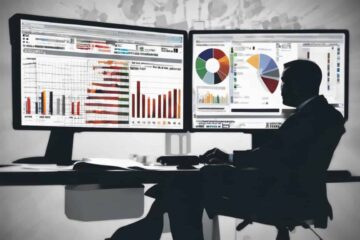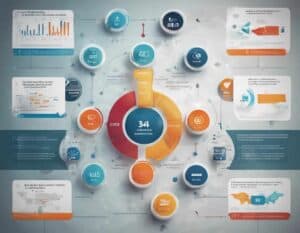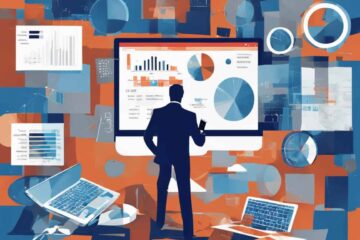Navigating the complex terrain of modern sales requires a robust, reliable tool that can handle the intricacies of data and reporting. Beest.app is precisely that tool, offering a comprehensive solution for sales teams who aim to stay ahead of the curve.
By providing detailed insights and streamlining report processes, Beest.app empowers sales professionals to harness data effectively, leading to smarter, faster decision-making.
The key to Beest.app’s effectiveness lies in its ability to transform raw sales data into actionable insights. This transformation is critical in a world where data-driven decisions can make the difference between hitting targets and falling short.
Setting Up Beest.app for Sales Reporting
Setting up Beest.app for your sales reporting begins with a simple, user-friendly interface that guides you through configuring dashboards and report templates tailored to your specific needs.
This setup is crucial as it defines how data will be visualized and interacted with, ensuring that the insights generated are relevant and actionable.
The platform’s flexibility allows for customization to meet diverse business requirements, from small startups to large enterprises.
Once Beest.app is configured, the platform’s powerful integration capabilities come into play. It seamlessly pulls data from various sources, ensuring that all information is centralized and accessible.
This consolidation is vital for comprehensive reporting and analytics, providing a holistic view of sales performance and opportunities for growth.
By setting up Beest.app correctly, teams can significantly reduce the time spent on data aggregation and focus more on strategic analysis.
Generating Reports with Beest
Beest.app excels in providing a robust, flexible platform for generating and managing sales reports, essential for any dynamic business environment.
With its user-friendly interface and powerful features, Beest ensures that users can create, customize, and utilize reports to drive decision-making and strategy formulation.
Here are some of its key features that specifically enhance report building capabilities.
A. Customizable Templates
Beest.app offers a variety of pre-designed templates that users can customize to fit their specific reporting needs.
Users can select which data fields to include, define their layout, and even integrate branding elements to maintain consistency across all organizational documents.
B. Real-Time Data Integration
The platform provides real-time data integration, ensuring that all reports generated reflect the most up-to-date information available.
This is crucial for making timely decisions in a fast-paced sales environment where data can change rapidly.
C. Automated Report Scheduling
Beest.app allows users to schedule reports to be generated and distributed automatically.
This feature helps maintain regular insight sharing without the need for manual intervention, ensuring stakeholders receive timely updates on sales performance and market conditions.
D. Advanced Analytics
With Beest, users can delve deeper into their data with advanced analytics capabilities.
The platform supports complex calculations, trend analysis, and predictive modeling, enabling users to extract meaningful insights that go beyond basic sales figures.
E. Interactive Dashboards
Interactive dashboards are a central feature of Beest.app, allowing users to visualize their data dynamically.
These dashboards are customizable and can be configured to display a variety of interactive charts, graphs, and maps, providing a comprehensive overview at a glance.
F. Multi-Source Data Aggregation
Beest.app can integrate data from multiple sources, allowing users to compile and compare information from different databases or software systems.
This feature is particularly valuable for organizations that operate across various platforms and need a unified view of their operations.
G. Mobile Accessibility
Ensuring that sales teams can access and generate reports on the go, Beest.app is fully optimized for mobile devices.
This accessibility allows users to retrieve and share reports from anywhere, facilitating better communication and faster decision-making in mobile or remote environments.
These features make Beest.app not just a tool for creating reports, but a comprehensive solution for managing sales data and insights effectively, helping businesses to remain agile and informed in their strategic decisions.

Automating Reports with Beest.app
Whether it’s weekly sales trends, monthly performance analyses, or quarterly forecasts, automated reporting helps maintain a rhythm in business processes, aligning all team members and stakeholders with the latest data-driven insights.
Automating reports with Beest.app brings numerous benefits to sales teams, enhancing efficiency and accuracy in their reporting processes. Here are some of those.
- Increased Efficiency: Automation significantly reduces the time required to generate and distribute reports, allowing teams to focus more on analysis and less on data compilation.
- Consistency: Automated reports ensure consistent formatting and structure, which improves readability and reduces the potential for errors.
- Timeliness: Reports are delivered on a regular schedule, ensuring that all stakeholders receive the latest data at the right time for strategic decision-making.
- Scalability: As business needs grow, Beest.app’s automation capabilities can scale to handle increased data volume and reporting demands without additional resource allocation.
- Improved Accuracy: By minimizing human intervention, automation reduces the risk of manual errors, leading to more accurate data reporting.
- Enhanced Strategic Planning: Regular and reliable reports allow management to quickly identify trends and adjust strategies, keeping the business agile and competitive.
- Cost Reduction: Automating report generation can lead to significant cost savings by reducing the labor hours needed for manual report preparation and distribution.
These benefits collectively help organizations streamline their reporting processes, ensuring that they can make the most of the data they gather to drive business success.
The automated reports generated by Beest.app are not just timely but also formatted according to pre-set specifications, which ensures uniformity and reduces the chance of errors.
Analyzing Sales Data with Beest.app
Beest.app’s analysis tools are designed to provide deep insights into sales data, allowing teams to understand not just what is happening but why it is happening.
These tools enable users to dissect every aspect of the sales process, from lead generation to final sales outcomes. Analyzing data in this granular manner helps identify successful tactics and areas needing improvement, offering a clear path to optimized performance.
Furthermore, Beest employs advanced analytics techniques, such as predictive analytics and trend analysis, to forecast future sales trends.
This foresight enables sales leaders to proactively adjust their strategies, potentially securing a market advantage by anticipating changes before they occur.
With Beest.app, data is not just a record of past and present but a beacon guiding future actions.
Advancing Sales Strategies Using Reports
Sales reports are invaluable tools that can drive strategic advancements in sales approaches, ensuring that companies not only respond to market demands but also proactively shape their sales tactics for optimal performance.
By analyzing these reports, sales teams can gain insights that allow them to fine-tune their strategies and capitalize on emerging opportunities.
Here are some ways to use sales reports to advance sales strategies.
- Identify High-Performing Regions: Focus resources on regions that show high sales potential as indicated by the reports.
- Adjust Product Offerings: Tailor product lines based on sales trends to better meet customer demand.
- Optimize Pricing Strategies: Use sales data to adjust pricing and maximize profit margins without losing market competitiveness.
- Enhance Customer Targeting: Refine marketing campaigns by targeting demographics that show the highest conversion rates in sales reports.
- Forecast Future Trends: Predict future sales trends to prepare inventory and marketing efforts accordingly.
- Improve Sales Forecast Accuracy: Refine forecasting models based on historical sales data to reduce discrepancies between projections and actual sales.
- Evaluate Sales Team Performance: Identify top performers and areas needing improvement by analyzing individual or team sales figures.
- Streamline Distribution Channels: Analyze which channels are most effective and focus efforts on optimizing these pathways to the customer.
- Plan Promotional Campaigns: Schedule promotions and marketing efforts based on past sales performance during similar periods.
- Increase Customer Retention: Identify patterns in customer purchasing behavior that can inform strategies to increase loyalty and retention.
- Leverage Competitive Insights: Monitor how changes in the market and competitor strategies affect sales, adjusting tactics accordingly.
- Drive Product Development: Utilize insights from sales trends and customer feedback in reports to guide the development of new products or improvements to existing ones.
By consistently leveraging the insights gained from sales reports, companies can not only respond to current market conditions but also anticipate and shape future trends, ensuring sustained growth and competitiveness.

Final Thoughts | Supercharge Your Sales Strategy with Beest.app
Elevate your sales game with Beest.app, the software that transforms everyday sales reporting into a strategic powerhouse fueling the entire sales management lifecycle.
By weaving Beest.app into the fabric of your daily operations, your team not only boosts efficiency and precision but also deepens strategic acumen. Its prowess in delivering detailed, real-time insights ensures that your organization remains a formidable competitor in the bustling market landscape.
For a sales team ready to transcend traditional boundaries and unleash unparalleled growth, investing in Beest.app’s field sales management software—especially its report building capabilities—is the smart move.
Invest in Beest.app today, and turn your sales data into your strategic advantage.
Frequently Asked Questions
What makes Beest.app different from other sales reporting tools?
Beest.app integrates seamlessly with multiple data sources, providing real-time insights and a comprehensive suite of analytics tools designed for dynamic sales environments.
Can Beest.app help in tracking team performance over time?
Yes, Beest.app allows sales managers to track team performance through customizable reports that highlight trends, achievements, and areas for improvement over any given period.
How does Beest.app support decision-making in sales?
Beest.app supports decision-making by providing detailed analytics and predictive insights that help sales leaders make informed strategic choices quickly and accurately.
Is Beest.app suitable for small businesses as well as large enterprises?
Absolutely, Beest.app is designed to scale, making it suitable for both small businesses seeking growth and large enterprises needing comprehensive, detailed reporting.
What type of customer support does Beest.app offer?
Beest.app offers extensive customer support, including a 24/7 helpdesk, online tutorials, and personalized training sessions to ensure users maximize the benefits of the platform.





















